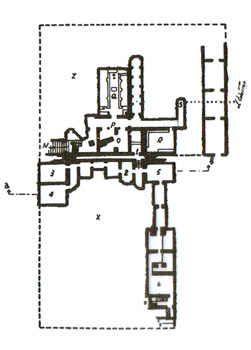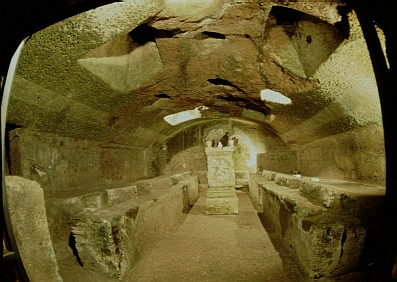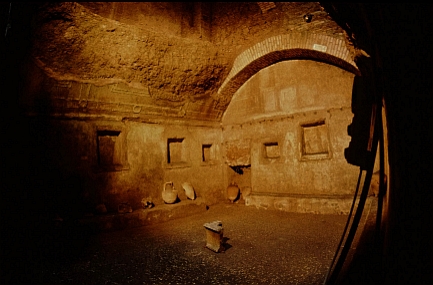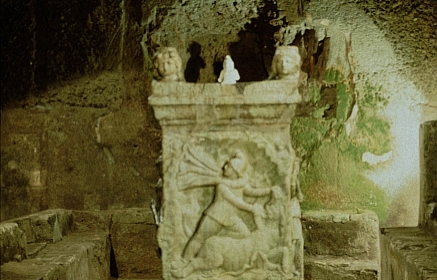
Preface
Abbreviated Sources
and References
Annotations: title,
epigraph and
dedication
Part I
Part II
Part III![]()
The
Mithraeum under the church of San Clemente, Rome photos courtesy of Rahlf Hansen text by Anja Zeidler |
|
"—A
nice . . . place of worship! The illustration pinioned by her gaze
was captioned Il Tempio di Mitra. —Look at it! a dirty little
underground cave, no place to kneel or even sit down, unless you
could call this broken stone bench a pew? She got her breath when
he interposed, —But . . . —And the altar! look at it,
look at the picture on it, a man . . . god? and it looks like a
bull! —Yes, a pagan temple, they’ve excavated and found the basilica of Saint Clement was built right over a temple where worshipers of.... —Pagan indeed! And I suppose you couldn't resist setting foot inside yourself?" The Recognitions, p. 38 |
|
| Click images for very large versions. © Rahlf Hansen; all rights reserved. |
|
| An overview of the Mithraeum's chamber called the
triclinium, the "dining room," where ritual meals in remembrance
of Mithras were held (Q on the plan, above). Participants sat on the
benches along the sides . |
|
| The Scuola Mitriaca, thought to have been used for teaching about
the Mithras cult (R on the plan). |
|
| The altar in the Mithraeum, with a relief of Mithras slaying the bull, a central icon in all places of Mithraic worship. The god, who wears a Persian or phrygian cap, characteristically turns his head away while killing the bull. Beneath is a snake, a dog drinking the bull's blood, a scorpion biting his genitals, and his tail metamorphosing into an ear of corn, all presumably emblems of fertility. | |



